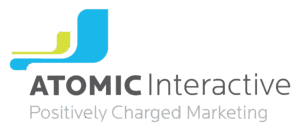Artificial intelligence is no longer a buzzword in digital marketing—it is transforming how people search and how businesses appear online. For Ohio companies, understanding the shift is critical. From Google’s AI-driven Search Generative Experience to conversational AI assistants, search behavior is evolving rapidly. Business leaders are asking: “How will AI change SEO for my business in Ohio?”
This article explores AI search optimization tips for Ohio businesses, explains how AI is changing SEO in 2025, and outlines practical AEO strategies for local companies in Ohio.
How AI Is Changing SEO in 2025
Traditional SEO focused on keywords, backlinks, and technical site performance. These remain important, but AI is changing how results are delivered.
-
Conversational Queries: More people search using natural language, asking questions like “How can my Ohio company prepare for AI-driven search?”
-
Contextual Results: Search engines are increasingly using AI to provide nuanced answers rather than simple links.
-
Content Quality Over Quantity: AI prioritizes accurate, helpful, and trustworthy content. Google’s Search Quality Rater Guidelines updated in 2023 emphasized “experience, expertise, authority, and trustworthiness” (EEAT) as core ranking principles.
According to HubSpot’s 2024 State of Marketing Report, 36% of marketers already use AI for SEO tasks like keyword research and content optimization, highlighting how rapidly AI is being adopted.
What Is AI Engine Optimization and Why Does It Matter?
AI Engine Optimization (AEO) is the practice of tailoring content for AI-powered search engines and assistants. Unlike traditional SEO, which aimed to rank high in search results, AEO focuses on being the most accurate and contextually relevant answer to user questions.
Why it matters for Ohio businesses:
-
AI assistants like ChatGPT and Google Gemini summarize answers directly. If your business is not included, you miss visibility.
-
Local companies risk being overshadowed by larger competitors unless they optimize for conversational, localized search.
-
AEO ensures your content is structured in ways AI can easily interpret and present to users.
AI Search Optimization Tips for Ohio Businesses
To prepare for the future of search, Ohio businesses should start adopting these practices now:
-
Focus on Natural Language Content
Write in a way that answers conversational queries. For example, create blog posts addressing “What kind of SEO works best for manufacturing companies?” rather than just targeting “manufacturing SEO.” -
Use Structured Data
Schema markup helps AI systems understand your content better, making it more likely to appear in rich snippets or AI-generated responses. -
Prioritize Local Relevance
Incorporate city-specific keywords and FAQs. Ohio businesses should target searches like “best SEO services in Cleveland for small business” or “web design in Dayton with SEO packages.” -
Invest in Content Depth
AI favors content that is detailed and authoritative. Thin or duplicate content is less likely to be surfaced. -
Optimize for Voice Search
Many AI-driven queries are voice-based. Incorporating conversational keywords such as “How can my Ohio company prepare for AI-driven search?” ensures your content aligns with spoken questions.
AEO Strategies for Local Companies in Ohio
-
Answer Specific Customer Questions
Create FAQ pages that use customer language. For example: “Why does SEO-friendly web design matter for Ohio businesses?” -
Highlight Local Authority
Showcase local partnerships, community involvement, and regional expertise to strengthen authority signals. -
Leverage Reviews and User-Generated Content
Customer feedback is highly valued by AI systems looking for trust indicators. Encourage and respond to reviews on Google and industry platforms. -
Maintain a Fast, Accessible Website
Technical performance is still key. A 2023 Google report found that sites loading within 2.5 seconds or less saw significantly higher conversion rates, reinforcing the need for speed. -
Blend SEO with Other Digital Channels
AI-driven search looks at signals across platforms. Social media activity, video content, and online mentions all help build a comprehensive presence.
How Can My Ohio Company Prepare for AI-Driven Search?
Practical steps for readiness include:
-
Conducting an AI-readiness audit of current content
-
Identifying conversational queries your customers are already asking
-
Updating website copy with question-and-answer structures
-
Implementing schema for products, services, and local business information
-
Partnering with digital agencies that specialize in both SEO and AEO
For small businesses, this preparation ensures they remain competitive in a search environment where AI is quickly reshaping the rules.
Trends to Watch in 2025
-
AI-Powered Analytics: Marketers are using AI to predict which keywords and topics will perform best, reducing guesswork.
-
Hyperlocal Search Results: AI is improving personalization, showing users businesses that align with their immediate location and preferences.
-
Content Authenticity Checks: Search engines are increasingly focused on detecting originality, rewarding businesses that produce genuine insights.
Artificial intelligence is reshaping how people search and how businesses connect with them. For Ohio companies, the future of visibility depends on combining traditional SEO with forward-thinking AEO. By following AI search optimization tips for Ohio businesses, understanding how AI is changing SEO in 2025, and adopting AEO strategies for local companies in Ohio, businesses can stay ahead of competitors and secure their place in AI-driven search results.
Atomic Interactive helps businesses across Ohio prepare for this shift with SEO strategies, content optimization, and AI-ready digital marketing solutions.
Contact us to get started on preparing your company for the future of search.


